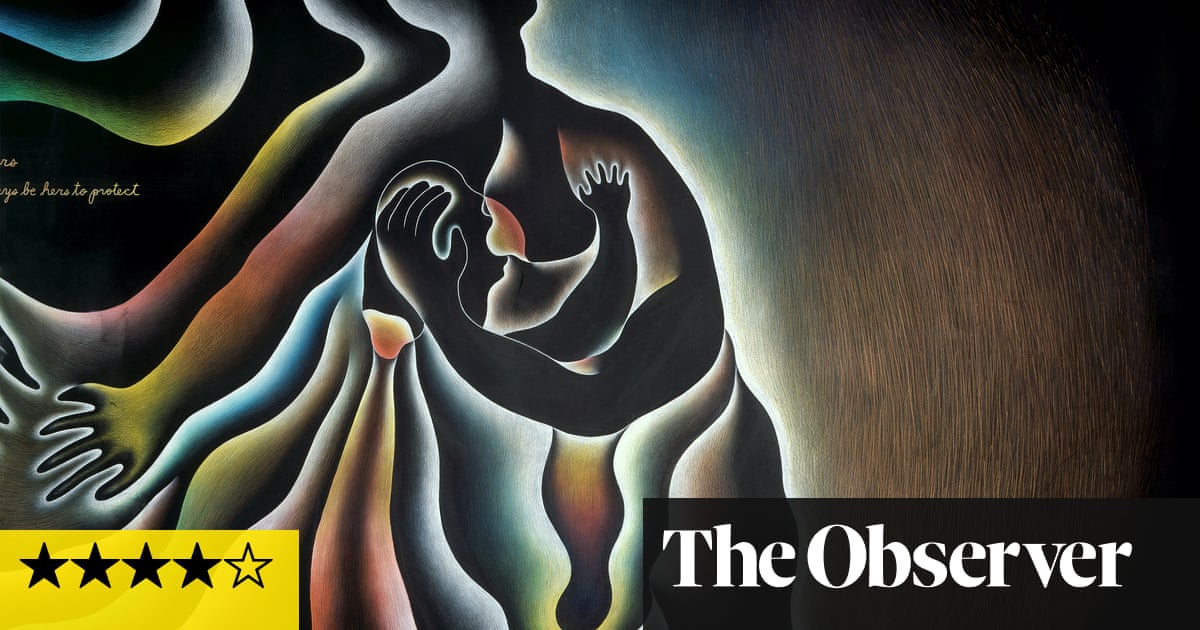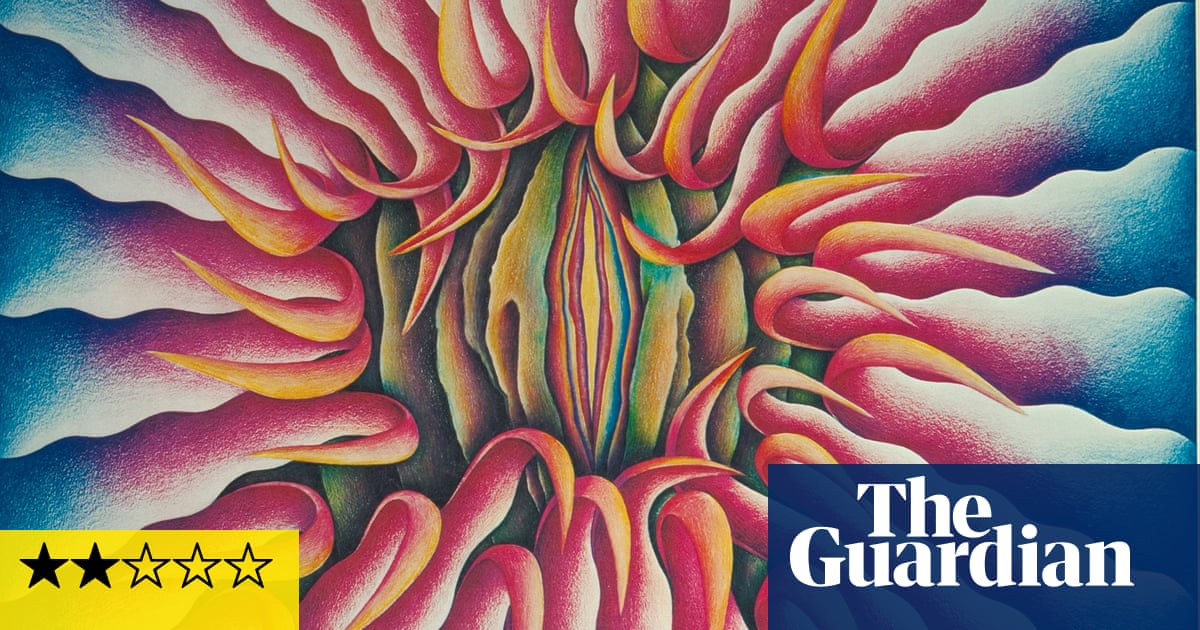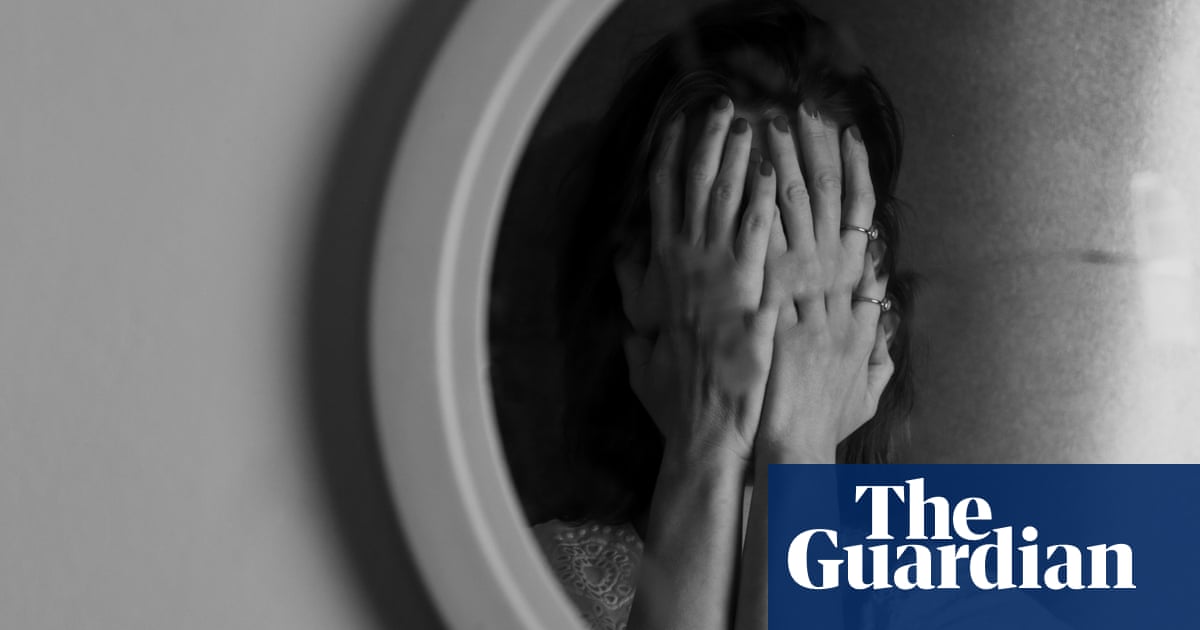
Fierce but gentle, blatant yet often graceful: Judy Chicago’s six-decade survey at the Serpentine North Gallery is not at all as expected. This is partly because of everything that this show omits. There are no death masks, bloody menstrual pads or caustic needlework. There are no gathered-lace vulvas standing in for the mind and art of Emily Dickinson.
Chicago’s most celebrated work – exhibit A in feminist art of the 70s, and once described by Roberta Smith in the New York Times as “almost as much a part of American culture as Norman Rockwell, Walt Disney, WPA murals and the Aids quilt” – cannot be here. The Dinner Party (1979), that vast triangular table, with place settings for 39 great women, above floor tiles citing 999 more, is now too fragile to move from the Brooklyn Museum.
Instead, we have Chicago’s film about those women, and how she came to create this epochal installation with the help of hundreds of others, casting, stitching, embroidering, painting on china. She narrates with all the clear calmness her multitude of enemies lacked. Witness the bullfrog outrage of Republican congressman Robert Dornan denouncing The Dinner Party to the house as “ceramic 3D pornography”, in an equally mesmerising film.
Judy Chicago, now 84, has turned all the tables. It is not just that she is finally receiving long-overdue museum retrospectives, but that she has reversed the derision, anger, neglect and general nixing she once suffered. For details, you only need to consult her works, which tell of male collectors, dealers, gallerists and critics and their insulting ways, in the form of narratives written below delicate quasi-abstract images.
Peeling Back, from 1974, is the central image from her Rejection Quintet drawings. “How does it feel to be rejected?” Chicago asks. “It is like having your flower split open,” comes the answer in both word and image. What you see is a radiating circle of delicate, rainbow-hued petals peeling back from a central gathering of petals in vulval folds. It is an exposure, to be sure, but it is also the revelation of female anatomy.
These early works are gorgeous: trippy, psychedelic, glowing with vibrations, yet immaculately graphic. The politics are firmly inscribed. This image is for (or even of) Madame de Staël, that for Queen Christina of Sweden. Mandala-like whorls can convey both subjugation and female power. The defining imperative is feminine content.
But the aesthetic is to the fore, all the way through the Serpentine show. It is there in Chicago’s distinctive cursive script, so like the writing in children’s masterpieces such as Kathleen Hale’s Orlando or Jean de Brunhoff’s Babar. And it is there in Chicago’s beautifully smooth gradations of colour, running through the spectrum like airbrushed prog-rock album covers. Surely this has its origins in Chicago’s spray-lacquering of car bonnets, complete with feminist inflections, as an antidote to the male minimalism of 60s art.
Her silhouette drawings are terrific, hazy around the edges, pin-sharp with the shapes of women in labour, or childbirth. She makes the crowning of a baby’s head into an indelible graphic icon, all black-and-white zip and design (some people may not even register what they are looking at).
Indeed, the first work in the show is a massive reprise of Genesis, in which the universe is born from the labouring of a woman. It is a sumptuous piece, in rainbow colours on a massive black scroll, the actual birth remarkably swoony and un-explicit. Only the most pedantic viewer will be looking for the anatomical details hidden in the contours of planet or landscape.
But Chicago can be twee. The Broken Butterfly series (shattered ceramics in silk-lined cases): “Full of hope and nearly on the wing.” And she can be crude. Pissing on Nature shows a man literally, and copiously, in the act. When the script appears white on black, like chalk on a board, it looks uncomfortably like the lesson it so often is, banging on about ecological disasters.
All the objections are easily surmised. Chicago’s art equates feminism with the female anatomy; it is essentialist in its insistence on fundamental differences between men and women. There is only one Black woman at the Dinner Party table. Her feminism is too narrow, or it is too personal. (As the daughter of a female artist who experienced similar knockbacks in the 70s, however, it spoke very keenly of the obstacle race to me.)
Anyone standing before What If Women Ruled the World?, a great quilted hanging of replies about peace, love and female understanding, as if there had never been a Madame Mao or a Margaret Thatcher, will want to argue, or sigh, or perhaps feel oddly moved by all this evergreen sincerity. Just as anyone who notices the heavy nod to Dior, for whom Chicago has designed rainbow handbags, may accuse of her of corporate feminism.
But there is something to be said for an art that believes in labour and childbirth, not just Christianity’s neatly tidied postnatal nativities. And there is something to be said for all these cooperative projects, where the great works of women other than herself are so vaunted by Chicago. Above all, this is an art that holds itself open to dispute. Take a friend. Consider what is being said and shown. Then go ahead and argue.
Judy Chicago: Revelations is at the Serpentine North Gallery, London, until 1 September












